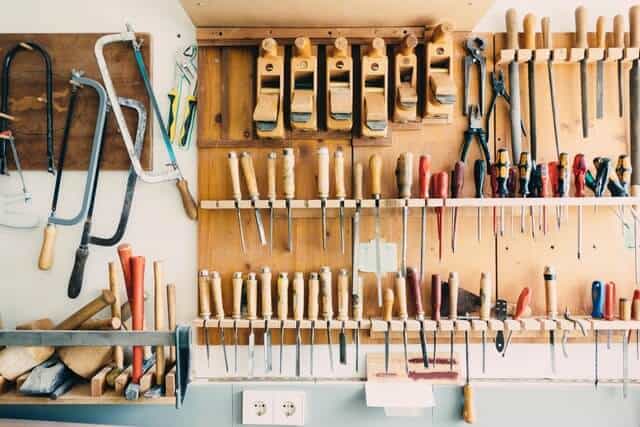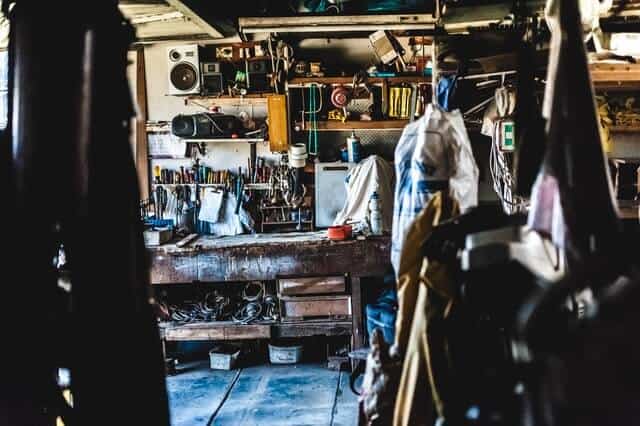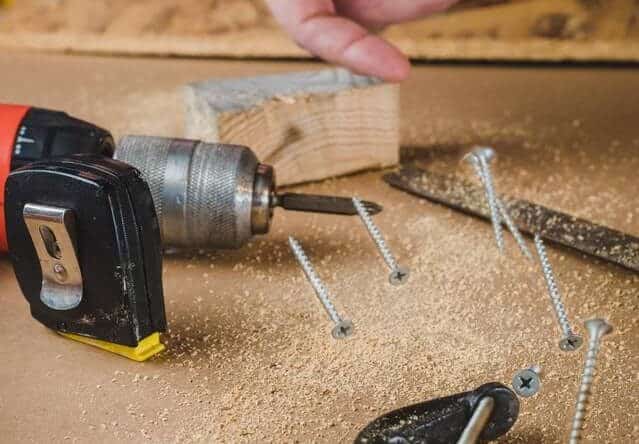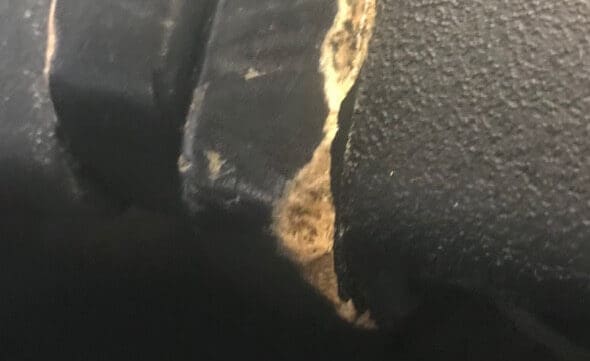What is the Best wood to use for a Workbench Top
If you are like me, your are probably offended by the thought of buying a workbench. Your a woodworker. If you don’t make your own workbench you might as well sell all your tools on craigslist. If you are interested in ideas for building your own workbench check out the article DIY workbench on this website.
In this article we will take a deep dive into all your options on what wood to use for your workbench top.
The best type of wood to use for a workbench top depends on how you intend to use it. MDF, Plywood, and hardboard are all good options.
- MDF is smoother which is good for moving heavy objects around easier. Also doesn’t splinter like plywood.
- Plywood is great if you get a bit messy with glue and solvents. Its cheap and easy to replace and you can use the old piece for templates or jigs.
- Hardboard(or HDF) usually has a coating that makes it a better work surface. Put a piece on top of Plywood for easy change out.
Keep in mind that you will end up clamping, drilling, and otherwise abusing the bench top so something replaceable is a good choice.
What are the Workbench types?
- Decorative workbenches- usually made by a master craftsman to show off how good they are at woodworking.
- Handyman Workbench- for someone who is constantly fixing everything themselves.
- Woodworker workbench- for those serious about making object and furniture with wood.
Fancy Decorative workbench

This type of workbench is for showing off your awesome woodworking skills. Perfect joints, sanded to a great finish(only 1000 grit will do). Usually hard pressed to find a spec of sawdust in the vicinity.
If you have the skill to make this type of bench thanks for reading this article…and please let me know what your workbench secrets are in the comments.
Handyman workbench

Making some planter boxes for your new garden? Maybe fixing the lawnmower on your workbench? This is the type you need. I highly recommend water/sludge resistant materials like plywood that are cheap and easy to replace.
Make it strong and beefy so it can survive whatever your going to toss on it.
Spend your money on home improvement instead of a workspace because your workspace is wherever your fixing stuff.
Woodworker workbench
This is the most important type. A true work surface that you can use for clamping furniture together, gluing up pieces, and clamping your boards for sanding and shaping.
You need a good sized flat, versatile surface that you can pit a chair or table on top of for some routing or finishing.
The top will survive about 6 months of moderate use before needing replaced. A high quality plywood can than be used for making templates.

Standard Workbench Top Ideas
Plywood only
- One or a couple of layers stacked on top with tape or a wood border around the edges.
- Easy to mount vises and clamps due to how good plywood holds screws.
- Easy to clean off glue and screw holes by attacking it with a sander.
MDF on top of plywood
- Smooth surface that wont damage your project.
- Easy to slide heavy objects on it.
- Good work surface when doing intricate work.
Thin Layer of Hard Board on top of plywood or MDF.
- The hardboard is a great surface to work on.
- Very easy to replace when it gets damaged.
- holds screws better than MDF.
2×4’s or 2×8’s stacked on end side by side.
- Good surface for working with hand tools.
- Lasts forever as long as you treat it nicely.
- Solid surface for clamping and Vices.
What is MDF?
MDF is medium density fiberboard.
- Engineered composite that is similar to particle board.
- Stronger and denser than particle board.
- Sawdust and a binder(glue) squished into large sheets the size and shape of plywood.
Pros of MDF wood
- Very smooth surface that will not scratch or damage your project.
- Easy to paint due to its smooth surface. If you intend to paint MDF use a oil based primer and paint. Aerosols typically get absorbed and ruin MDF.
- Cheaper than Plywood.
- Straight and flat surface with no splinters or other defects that can cause problems with your work.

Cons of MDF wood
- Doesn’t do well with water. Easily soaks up water and swells up making the surfaces unusable. One solution is to paint it or shellac the whole think to prevent water intrusion.
- Really Heavy due to its density.
- Toxic if you are cutting or sanding the MDF due to the glue and binders its constructed from.
- Doesn’t do well if your like me and are always screwing things to the workbench. The fine particles crumble easily.
Advantages and Disadvantages of Plywood
Plywood is engineered wood that is manufactured by gluing thin sheets of wood together to make a sheet of wood.There are many different options and grades of plywood with some having a solid particle board core for strength.
The lower grades are usually used for construction(floor bases as an example). The higher grades are used for cabinets and furniture and are available in different species.
Advantages of Plywood
- Very strong due to the way it is made and easy to work with.
- Some varieties of plywood are made without the toxic binders.
- Good for screws due the wood grain.
- Isn’t easily damaged by water like MDF is. It will eventually get damaged by water. You can apply a sealant to it for protection.
- Any rough spots like dried glue or screw holes can be sanded to a smooth finish in seconds.
- Once you decide to replace a plywood workbench top, you can use chop up the piece for templates and jigs for your woodworking.
Disadvantages of Plywood
- Its expensive compared to MDF. Higher grades of plywood are costly.
- Cutting plywood leads to a rough edge with lots of splinters that need sanded off.
- Cutting plywood leads to a ruff edge with lots of splinters that need sanded off.
- Sometimes the better types are difficult to find.
What are the types of plywood
- Hardwood which is good for flooring and walls in construction
- Softwood which is good for flooring.
- Flexible which is great for curved wood.
- Marine which is the best type and used for boats.
The best type of plywood for a workbench top would be hardwood,
Is plywood more expensive than MDF?
Cost for a 4′ x 8′ sheet 3/4 inches thick:
- MDF average $25 to $30
- Plywood average $25 to a $300 depending on the grade and type.
The Best plywood's for workbench tops
If you are worried about your budget use a softwood type of plywood with a Hard board or MDF top.
The best one to use is Baltic Birch or marine grade plywood.
You want to use 3/4 inch or thicker sheets of plywood for stability and strength of your work surface.
Can you use hardboard for a workbench top
Its a great idea due to how easy it is to replace it when its condition goes downhill. Put a piece on top of a couple of layers of Plywood or MDF and you have a good surface to work on.
Which Plywood is strongest?
The strongest plywood types are either aircraft grade or marine grade plywood.
Aircraft grade plywood is extremely durable, heat and moisture resistant that is made with thin veneer sheets for added flexibility and high strength. Used in heavy furniture, boats, and aircraft.
Marine Plywood is used in boats and dock construction. It uses a exterior glue that is water resistant .
To be considered marine grade plywood the surface has to be the correct species of wood and also have no blemishes or knots and all the layers need to be glued together with high strength glue so in the event of moisture, it’ll still work.
These two types of plywood maybe are not appropriate for a workbench top due to the higher cost.
What does plywood mean?
Plywwod is named after the number of layers of veneer used to make it with each layer being a ‘ply’. The typical range is 3 to 13.
The higher quality plywood varieties, usually hardwood, have the sheets of veneer glued together at right angles to make them really strong. The Hardwood types are usually used for anything that requires a good frame that looks nice like musical instruments, cabinets, and furniture,
Different veneers can have different thickness’s so the total thickness will be different depending on the type you use. Other types will have a solid core to give it more strength.

